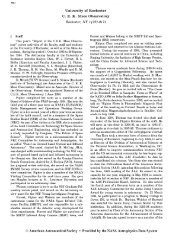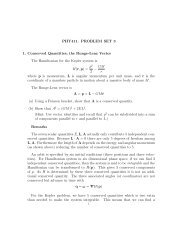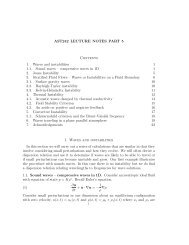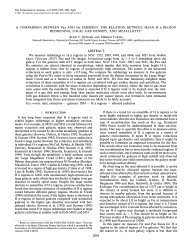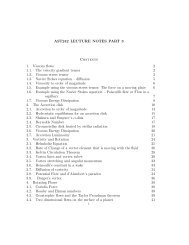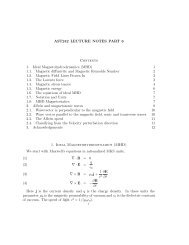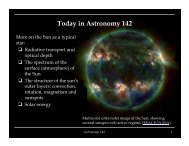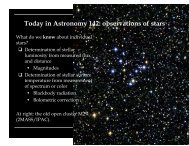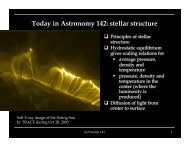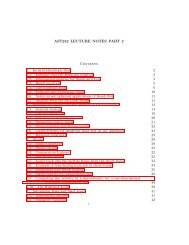Today in Astronomy 142: the Milky Way - Astro Pas Rochester
Today in Astronomy 142: the Milky Way - Astro Pas Rochester
Today in Astronomy 142: the Milky Way - Astro Pas Rochester
- No tags were found...
Create successful ePaper yourself
Turn your PDF publications into a flip-book with our unique Google optimized e-Paper software.
Motions of stars <strong>in</strong> <strong>the</strong> Galaxy, and <strong>the</strong>ir use <strong>in</strong>determ<strong>in</strong><strong>in</strong>g its mass distributionHow much does <strong>the</strong> Galaxy weigh?Stars move about <strong>in</strong> response to <strong>the</strong> gravitational potential of<strong>the</strong> rest of <strong>the</strong> stars <strong>in</strong> <strong>the</strong> galaxy.Their systematic motions (rotation) can be used simply withNewton’s Laws to measure masses.! This works even better with <strong>in</strong>terstellar gas than withstars.Stars collide <strong>in</strong>-elastically very rarely, so <strong>the</strong>ir randommotions can be used with <strong>the</strong>rmodynamics to measuremasses - <strong>the</strong> stars <strong>in</strong> this sense can be thought of as particles<strong>in</strong> a gas.Let’s do some examples of <strong>the</strong> latter.<strong><strong>Astro</strong>nomy</strong> <strong>142</strong> 11




